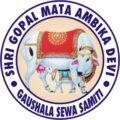Date: 9 November 2024
Gopashtami is a traditional Hindu festival dedicated to the worship of cows and Lord Krishna, celebrated primarily in the Indian states of Uttar Pradesh, Rajasthan, and Gujarat. This festival falls on the eighth day (Ashtami) of the bright half (Shukla Paksha) of the Kartik month (October-November) in the Hindu lunar calendar. Gopashtami is a significant day in the Vaishnavite tradition, as it marks the transition of Lord Krishna from a caretaker of calves (Bal Gopal) to a protector of cows (Govinda), symbolizing his growth and responsibility.
Significance of Gopashtami:
- Celebration of Krishna’s Role as Govinda: According to Hindu mythology, Gopashtami commemorates the day when young Krishna, along with his brother Balarama, was given the responsibility of herding the cows instead of just calves. This transition is symbolic of Krishna’s growth and readiness to take on greater duties as a protector of cows and nature.
- Cow Worship (Gau Puja): On Gopashtami, devotees perform Gau Puja, which involves washing and decorating cows with colorful cloths, turmeric, kumkum (vermillion), and garlands. Special rituals are performed, and cows are offered fresh grass, sweets, and special food items as a mark of respect and gratitude.
- Prayers and Offerings: People visit temples, especially those dedicated to Krishna, to offer prayers and seek blessings. Devotees recite mantras and sing bhajans praising the divine qualities of Krishna and the importance of cows. Special aartis (rituals of worship with lamps) are conducted in temples and Gaushalas (cow shelters).
- Gau Seva (Cow Service): On this day, many people engage in Gau Seva by feeding, grooming, and taking care of cows in Gaushalas. Acts of charity, such as donating fodder, medicines, or money for the welfare of cows, are considered highly auspicious.
- Cultural and Educational Activities: Gopashtami is often celebrated with cultural programs, including dances, plays, and storytelling sessions that depict the life of Krishna and the importance of cow protection. Competitions like drawing, painting, and essay writing on themes related to cows and Krishna are organized for children to educate them about the significance of the festival.
- Processions and Celebrations in Temples: Many temples, particularly in Vrindavan, Mathura, and Dwarka, host grand celebrations with beautifully decorated cows and processions. The streets are filled with devotees, music, and dance, recreating the joyful spirit of Krishna’s childhood days.
- Blessings for Prosperity and Protection: Gopashtami is also seen as an opportunity to seek the blessings of cows, which are considered sacred and symbols of prosperity, fertility, and motherly nurturing in Hindu culture. Worshiping cows on this day is believed to bring health, wealth, and protection to families.
Gopashtami not only highlights the cultural and spiritual importance of cows in Hinduism but also serves as a reminder of the need for compassion, service, and protection of all living beings. The festival celebrates Krishna’s deep connection with nature, animals, and his role as a guardian of life.

